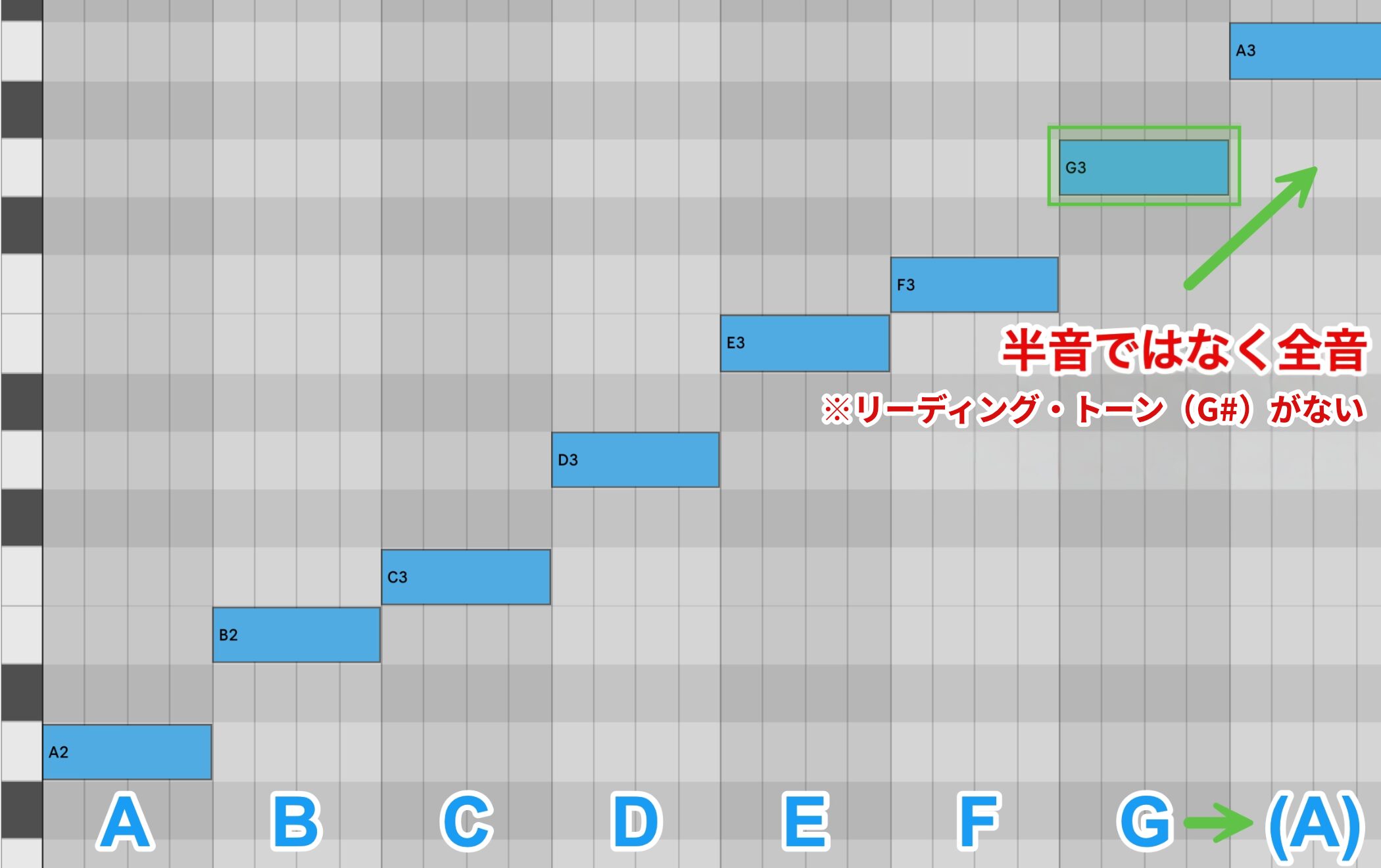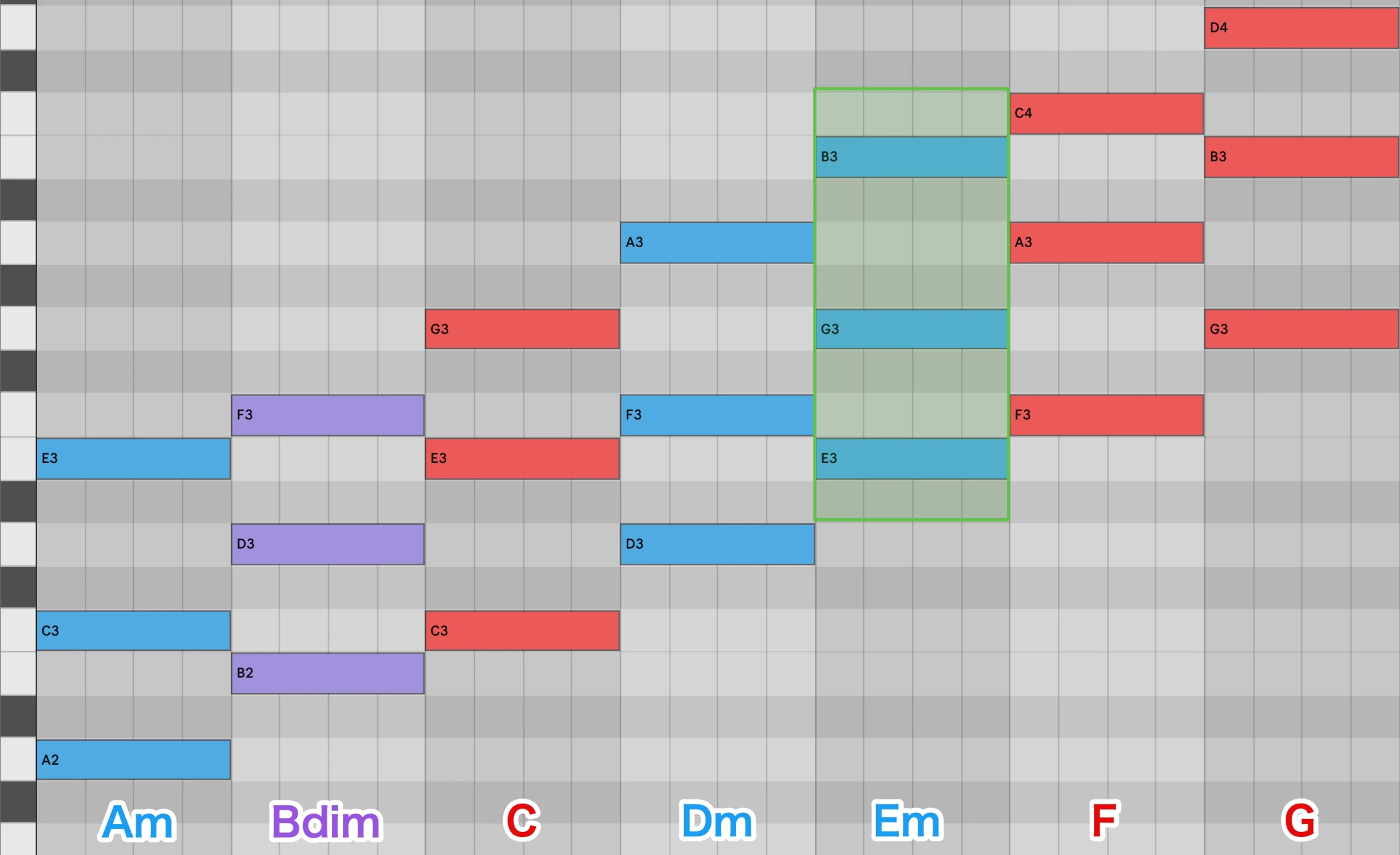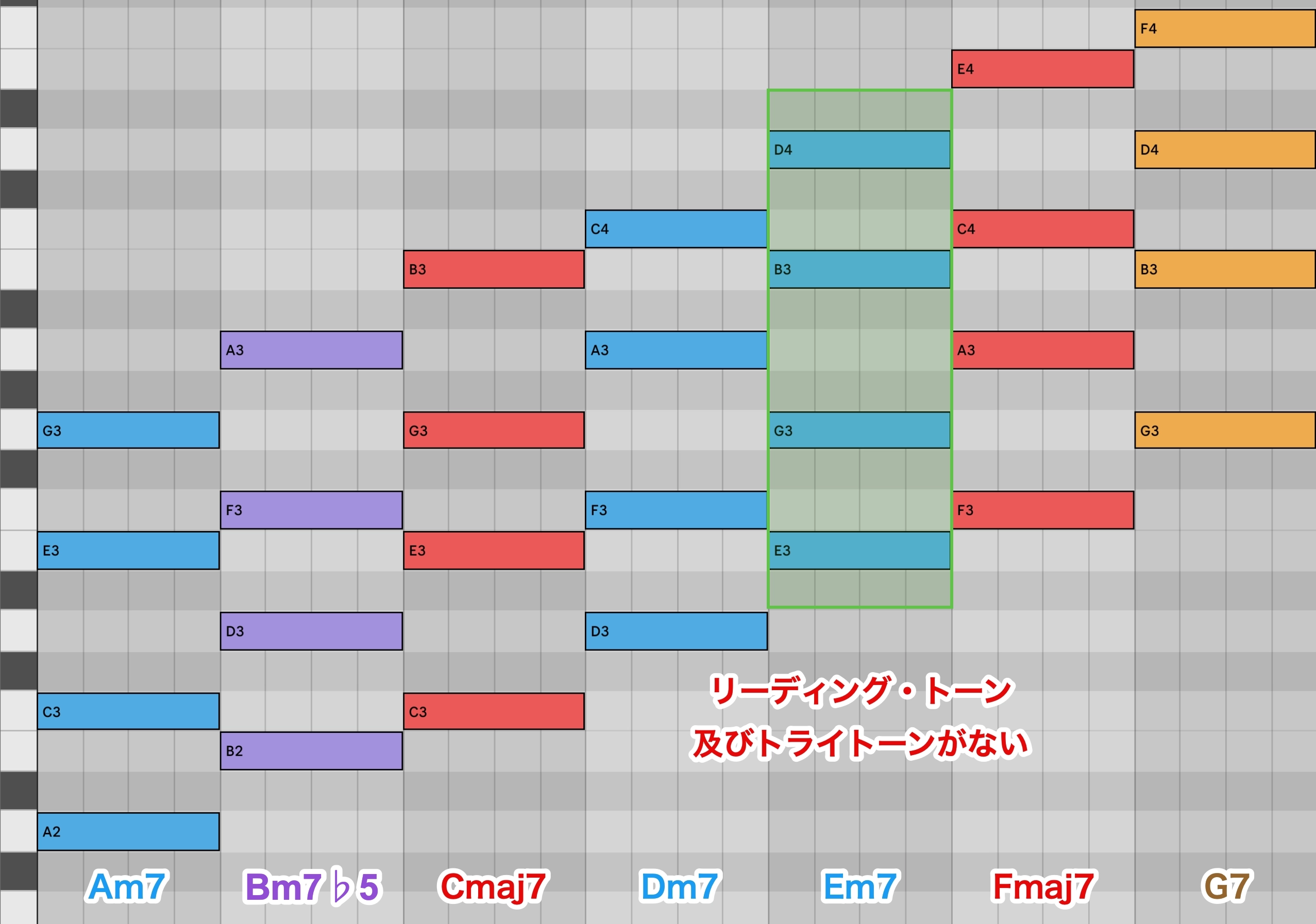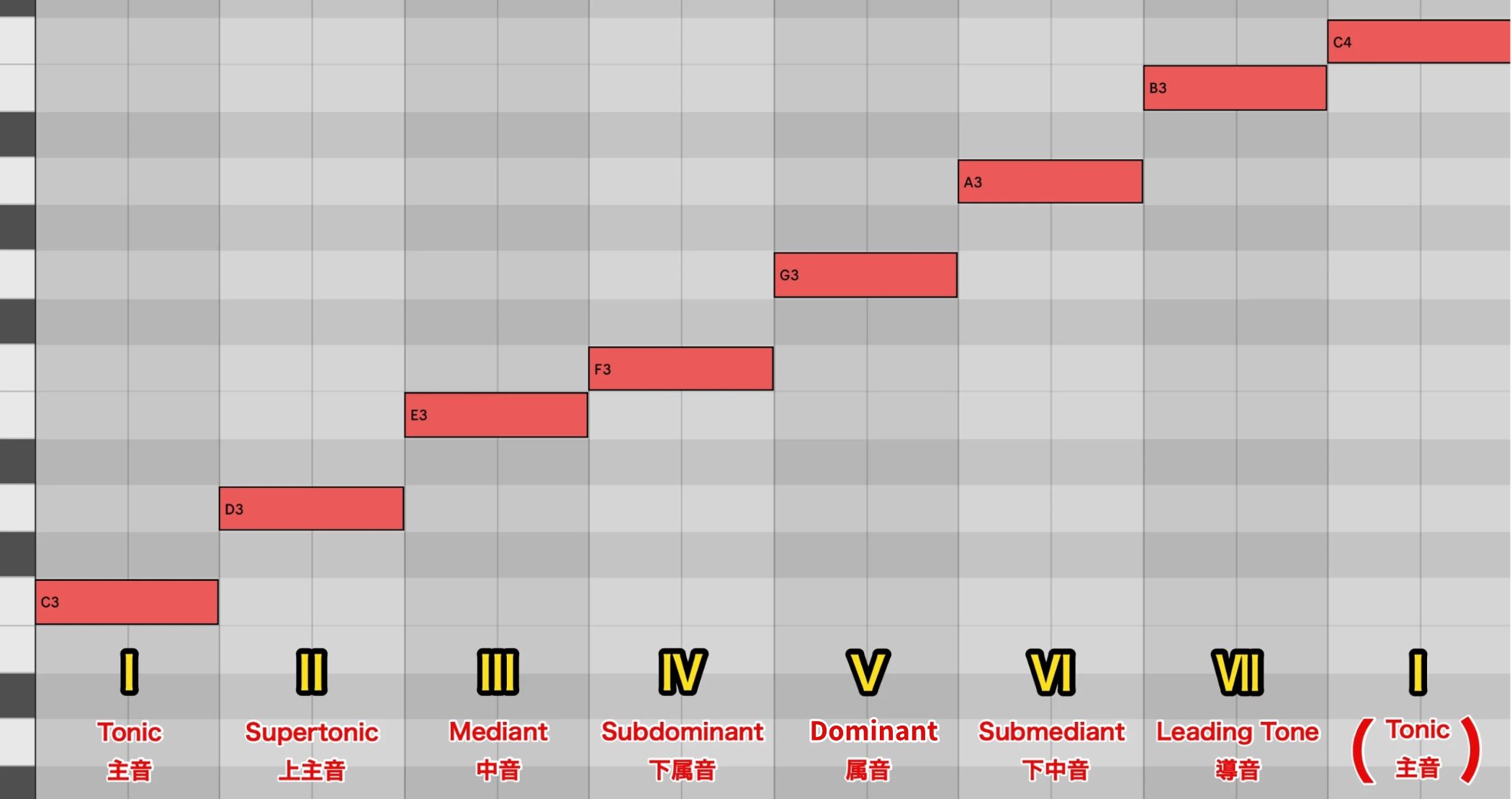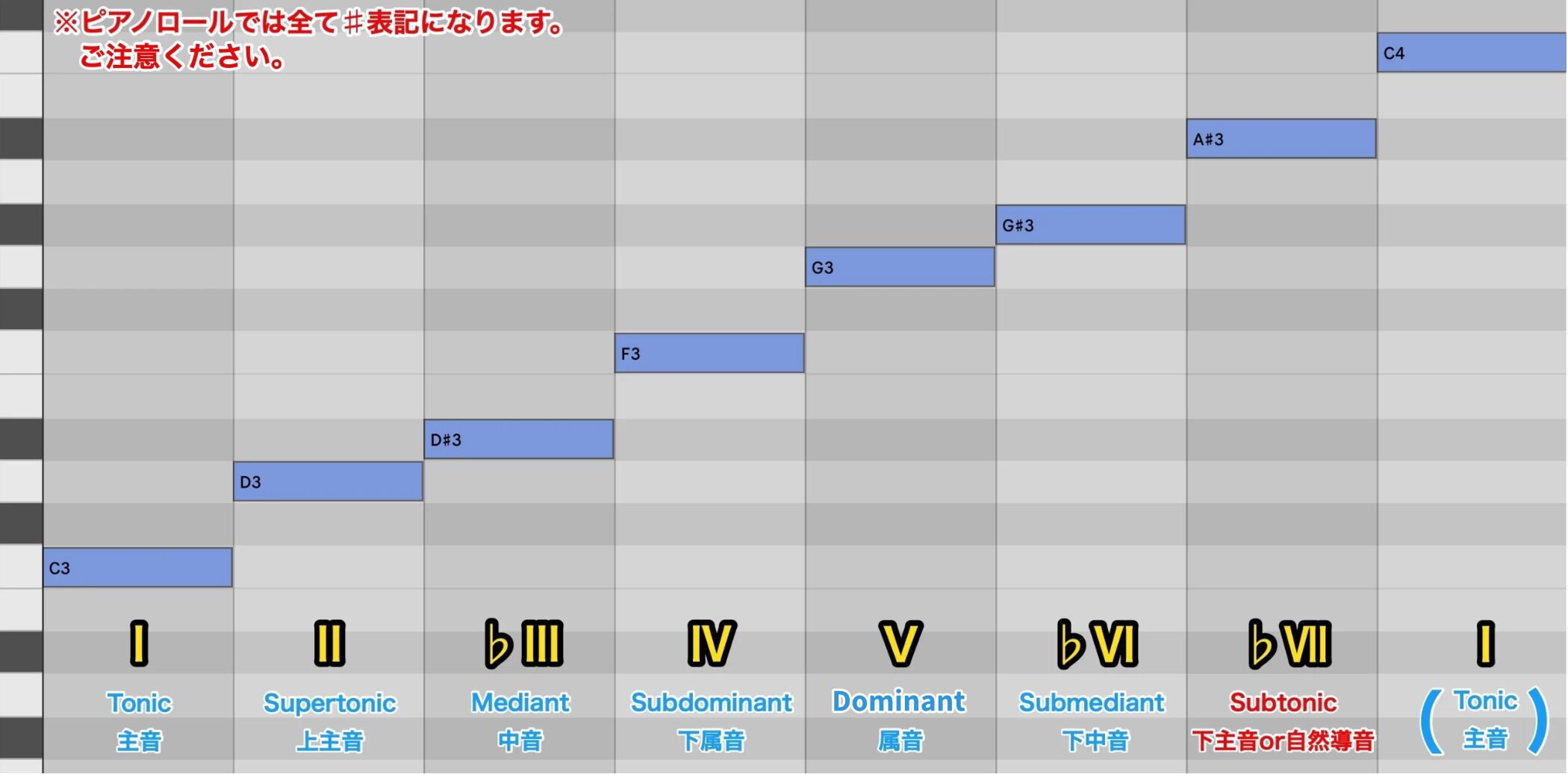音名の相対表記(Scale degree names)ナチュラル・マイナー編/音楽理論講座
ナチュラル・マイナーダイアトニックによる進行作りに向けて

今回より、これまで学んできた”ナチュラル・マイナー”のダイアトニックコードを使用して、ストーリー性のあるコード進行を作成する方法に焦点を当てていきます。
ここでは、第46回の後半で触れた、以下の点についても意識しながら進めていきます。
- 半音上のTonic(トニック)に導くと言う意味の=Leading Tone(リーディング・トーン) = 導音(どうおん)がない。
- 5番目に出来上がるコードに、3和音では”Leading Tone”が含まれず、加えて4和音ではトライトーンがない(m7コードのため)
また、第27回で取り上げた、メジャーの音名の相対表記(Scale degree names)との違いにも注目していきましょう。
ナチュラル・マイナーにおけるスケールディグリーネームとそれぞれの役割
ここで、各キーにおける「C」という音に注目してみましょう。
Cナチュラル・マイナースケールでは左から1番目に位置します。
Gナチュラル・マイナースケールでは4番目。
こちらもメジャーと同様に、同じ音でも各マイナーキーによって役割が異なるという点がポイントです。
それではCナチュラル・マイナースケールを例に、それぞれ確認していきましょう。
メジャーとの違いは、最後の1つ(赤文字)だけですね。
♭が付かない表記や(III,VI,VII)、マイナーは小文字(ⅲ等)で示すなど、様々な表記法があります。
- 「I」 Tonic(トニック)= 主音(しゅおん)
スケール(音階)の最初の音であり、 移動ドにおいてメジャーキー,マイナーキーではドの音です。
スケールの中で最も安定した音と言われており、調性のある音楽では、この音に帰り着きたい、戻りたい、という力が働きます。
- 「II」 Supertonic(スーパートニック) = 上主音(じょうしゅおん)
Superということで、Tonic= 主音の上にある音を指します。
- 「III」 Mediant(ミーディアントまたはメディアント)=中音(ちゅうおん)
Tonic= 主音とDominant = 属音の中間に位置する音という意味です。
- 「IV」 Subdominant(サブドミナント) = 下属音(かぞくおん)
Tonic= 主音から、P5th下の音です。上で考えると、P4th上の音ですね。
- 「V」 Dominant(ドミナント) = 属音(ぞくおん)
Tonic= 主音からP5th上の音です。下で考えるとP4thですね。
下記のLeading Tone = 導音と共に、Tonic(トニック)に対して重要な位置付けとされています。
- 「VI」 Submediant(サブメディアント) = 下中音(かちゅうおん)
Tonic= 主音とSubdominant(サブドミナント)の中間に位置する音という意味です。
- 「VII」Subtonic(サブ・トニック) = 下主音(かしゅおん)or自然導音(しぜんどうおん)
❇︎”ナチュラル”・マイナースケールの”自然”的短音階のイメージです。
主音の全音下(M2nd下)にあり、半音上のTonic(トニック)に導く=Leading Tone(リーディング・トーン) = 導音(どうおん)より、終止感が弱いです。
上記ローマ数字(I~VII)は、単純に左から何番目という事ですので(♭)を省いています。
(VIIの箇所は違いがありますが、メジャーのIIIもナチュラルマイナーの♭IIIもMediant、VI,♭VIもSubmediantなため)
次回は、メジャーの学習で行った内容を、現段階でマイナーでも実践しながら、他のマイナースケールが存在する理由に迫っていきます。




